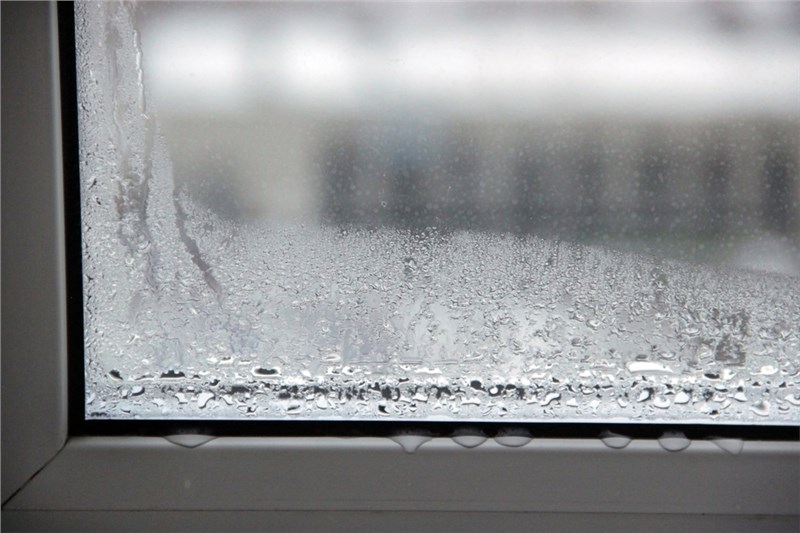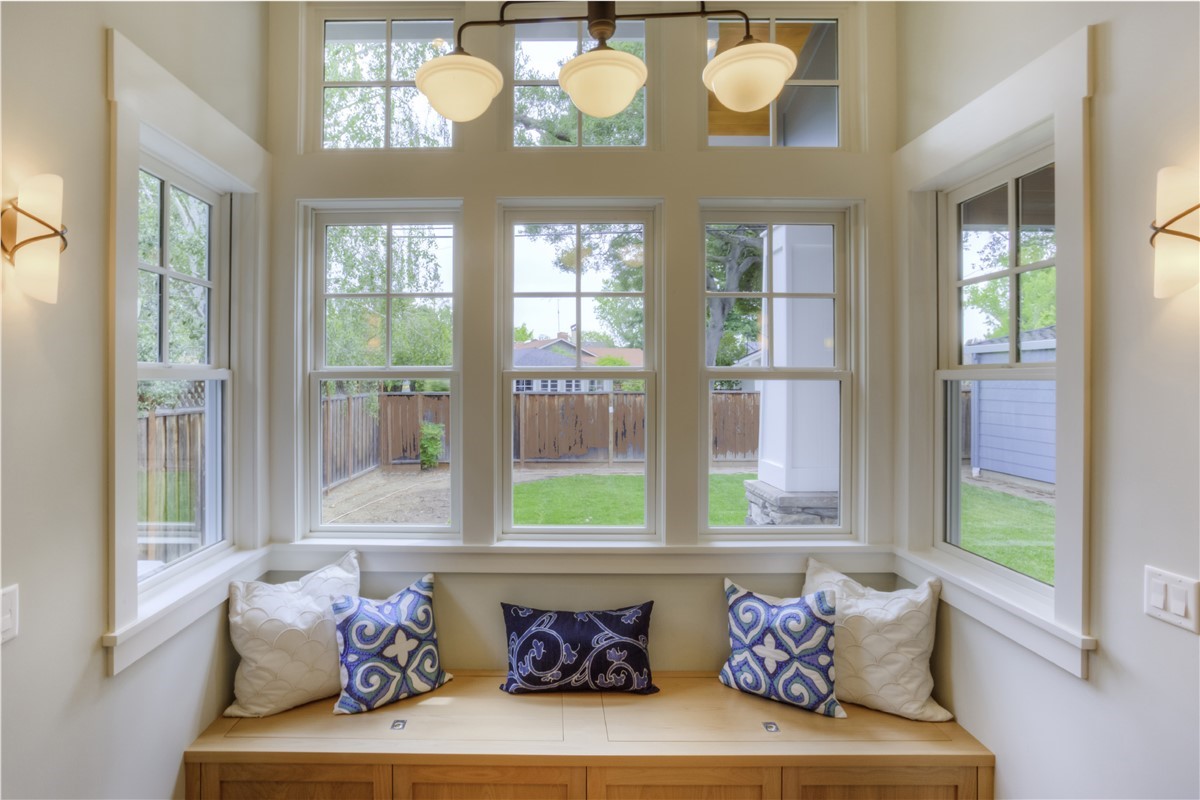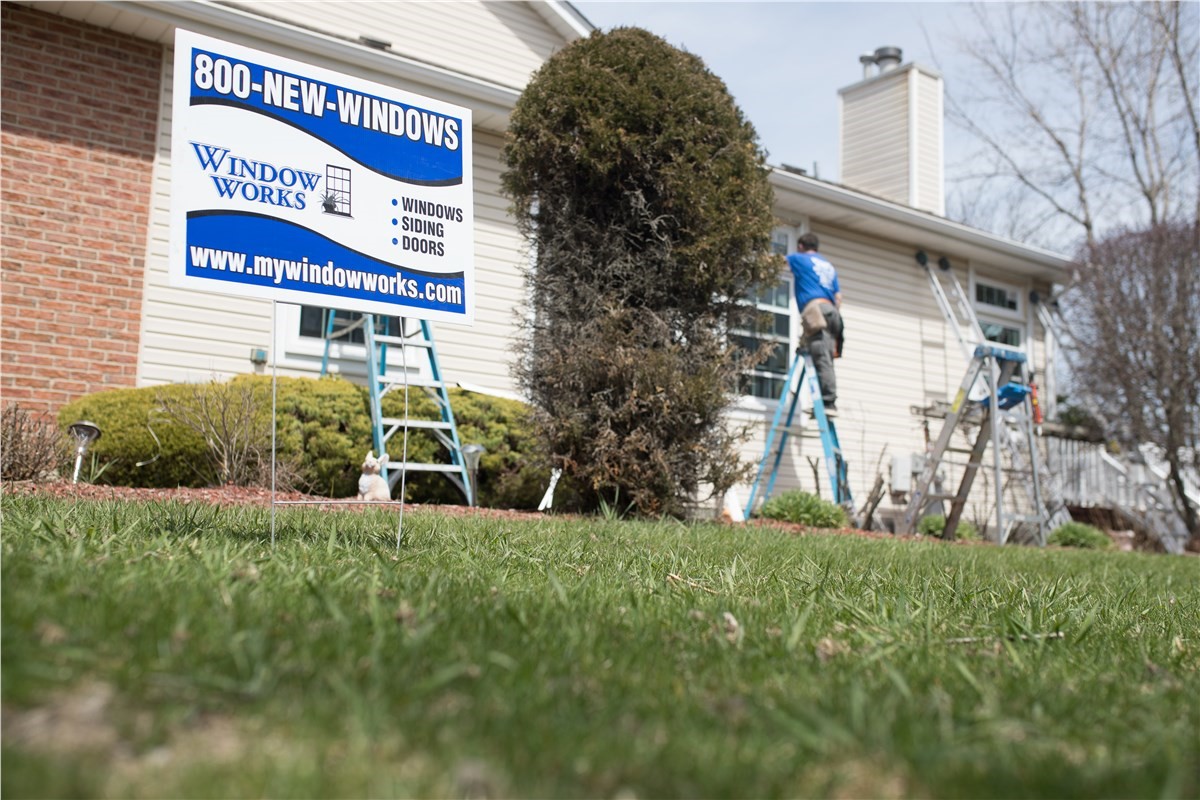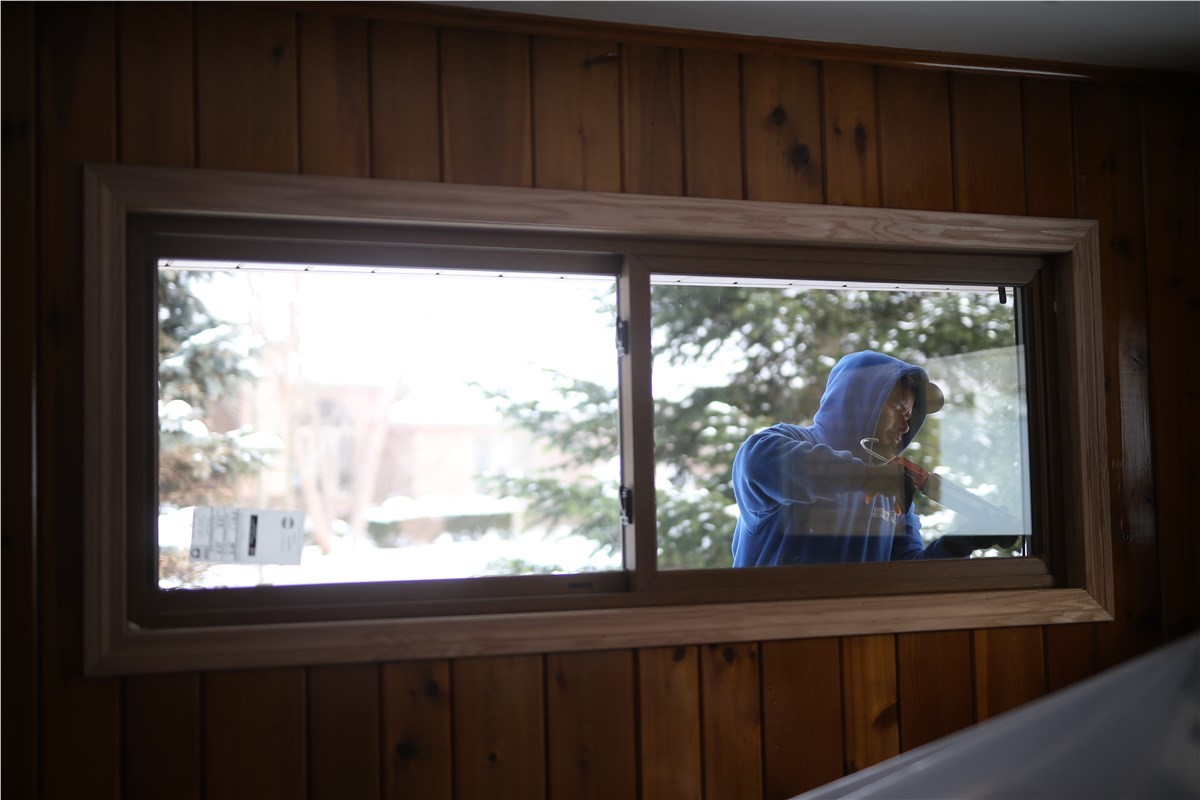
Frequently Asked Questions
What is condensation? Fog and water droplets on windows are forms of condensation. So is the water that appears on the outside of a glass of iced tea in the summer. It all comes from water vapor in the air.
What causes condensation on windows and sliding glass doors? Cold air holds less moisture than warm air. When temperatures sta rt to drop, warm air within your house comes into contact with cool glass surfaces. Water vapor that can no longer be held by the cooled air is deposited on the glass. During the first weeks of Winter, it can take several days for your home's interior water vapor levels to drop enough to avoid condensation. The process can repeat itself if moisture is added to the air in your home, or if there is a quick drop in temperature during a cold snap.
Why does condensation appear on windows and sliding glass doors first? Condensation is generally seen first on windows and sliding glass doors because they tend to have the lowest temperature of any of the visible surfaces in the house.
Do windows cause condensation? Windows do not cause condensation. They provide relatively cool surfaces where water vapor can condense.
Do drapes and window shades cause window condensation? No, but drapes and other window coverings can restrict the flo w of warm room air over glass surfaces. Therefore, condensation is more likely to occur when drapes are closed, and shades are pulled down.
What causes condensation on the inner surfaces of storm windows? This indicates that air is leaking outward past the inner window and is being trapped by a tight-fitting storm window. The moisture in that trapped air condenses onto the interior glass surface of the storm window. Many storm windows have one or more vents to the outside to relieve this problem.
Is there anything I can do to my windows to eliminate condensation? If you have windows with single-pane glass, consider replacing them with windows that have double-pane glass with a low-e coating and argon gas filling. This is not guaranteed to eliminate condensation, but at the least, it should significantly reduce it.
Is window condensation really reduced that much with double-pane glass? Laboratory testing shows that modern double-pane windows with low-e glass and argon gas allow about 37% relative indoor humidity without condensation (at 70 F inside, 0 F outside). Old single-pane windows only allow about 12% relative indoor humidity.
What is humidity? Humidity is water vapor, or moisture, in the air. Usually it is visible, but sometimes, such as with steam or ground fog, it's concentrated enough to be seen. Visible or not, all air contains some moisture.
Where does the moisture come from? There are many things that generate in door moisture. Perspiration and breathing of the occupants of a home adds moisture to the air. So does cooking, baths and showers, doing the laundry, etc. In fact, every activity that uses water adds moisture to the air. The normal daily activities of a family of four can add more than 18 gallons of water a week into the air in their home, greatly increasing interior relative humidity.
What is relative humidity? Air can hold only a limited amount of water vapor, and that amount depends on the air temperature. When air at a certain temperature contains all the vapor it can hold, it's said to be "saturated", which means a relative humidity of 100%. When it holds only half the water vapor it can hold, the relative humidity is 50%. Cooler air cannot hold as much water vapor as warmer air.
What are some other symptoms of excess humidity? Problems like peeling paint, rotting wood, buckling floors, insulation deterioration, mildew, and even moisture spots on ceilings and walls.
How do I know if I have excess indoor humidity? Check for damp spots on ceilings and room-side surfaces of exterior walls, particularly closets. Look for water and ice on the interior surfaces of windows and doors. Excessive interior humidity can be annoying to a homeowner and destructive to a home. It can damage sheetrock, paneling and window sills. It can also penetrate walls, deteriorating wood framing and reducing the effectiveness of insulation.
What does excess humidity do to my home? Excess humidity contributes to the deterioration of a home. Excessive humidity can pass through walls and freeze in the insulation. In spring it melts, damaging your ceiling and walls. Humidity has been known to force its way out through siding to form blisters under exterior paint.
Can moisture actually go through walls? Yes, through a force called "vapor pressure ". Moisture in wet air tries to flow toward drier air to equalize itself. This flow acts independently of air currents. In winter, inside air is much more humid than colder outside air. So, the vapor pressure pushes the inside moisture through wood, plaster, concrete and brick, toward the outside.
What happens then? Paint and varnish can block the flow of moisture, causing condensation to occur between the inside and outside walls, or under exterior paint surfaces. It can rot a home's wood frame and blister the paint.
Is condensation more prevalent in any geographical region? Yes. Condensation is more apt to occur in climates where the averge January temperature is 35 F or colder.
Does condensation occur only in winter? Usually, but it can occur during cold weather anytime, and occasionally it will form on the outside of windows on hot, humid summer days, when your air conditioner has cooled the glass.
Does condensation depend on whether my home is new or old? Generally, yes. Before the late 1970's, houses were not built as weather-tight as later ones. With the recent emphasis on energy-efficiency and ongoing improvements in construction techniques and materials, newer houses are much "tighter." An unfortunate by-product of these advances has been the tendency to lock moisture inside. Without adequate provisions for ventilation, excessive moisture can build up in the home, revealing itself as condensation.
Controlling Indoor Humidity How do I measure indoor relative humidity? To get an accurate reading, you can buy a humidity-measuring instrument such as a hygrometer or a sling psychrometer. Otherwise, watch your windows for symptoms of excess humidity. When excessive moisture collects on the inside glass in a living room or bedroom, you're approaching the humidity danger level.
Isn't high indoor humidity healthy in winter? That's a common belief, but there is little evidence to support it. High or low humidity in a heated house has not been shown to be an important health factor to a normal healthy person.
What are the recommended indoor relative humidity levels for winter? The University of Minnesota Engineering Laboratories performed a series of long and careful experiments on that subject. The following table shows the maximum safe humidity for your home, paint, insulation, and structural members:
Recommended interior relative humidity
- -30 F or below -- not over 15%
- -20 F to -10 F -- not over 20%
- -10 F to 0 F -- not over 25%
- 0 F to 10 F -- not over 30%
- 10 F to 20 F -- not over 35%
- 20 F to 40 F -- not over 40%
(Assumes 70 F indoor air temperature)
Tags
Subscribe to WindowWorks's Blog





